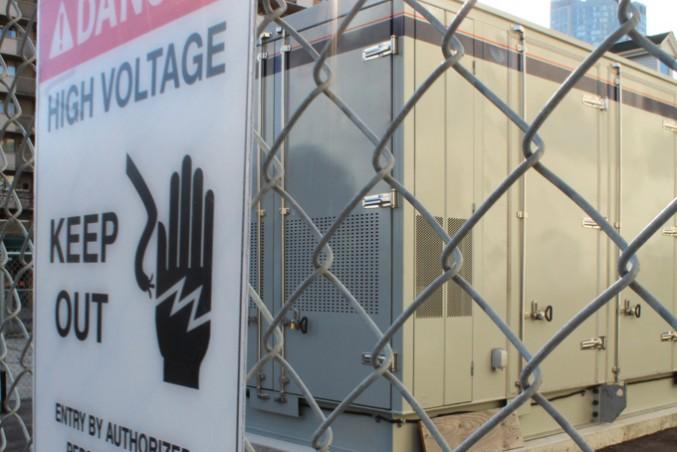By Noella Ovid
The Centre for Urban Energy (CUE) at Ryerson finished its five-year-long study of a massive battery system in the heart of Toronto. The study, which finished last month, found the battery has strong potential to help the city’s power grid save energy.
The 150 kilowatt hour lithium ion battery was installed at Dundas and Mutual streets in late 2015, towards the end of the study. The CUE partnered with Toronto Hydro for the project.
“In Ontario when the wind power is very high, the generation is very high and the demand is low, we can store the energy. And [when] Ontario demand is high and generation is low, we can discharge and supply energy to the grid,” said Chandrabhanu Opathella, lead researcher on the project.
Electricity costs more money and energy to produce when there are more users on the grid and is cheaper when there are fewer users on the grid.
The battery can power 150 houses for about four hours.
Researchers can use it to measure how much power needs to be discharged or charged at certain times, as well as automatically maintain the voltage grid or correct problems of frequency variations in the grid.
The battery system demonstrates how off-peak electricity can be stored to help improve grid performance during outages.
Opathella said the drive to test a battery energy storage system downtown came from the need for flexibility in Ontario’s generation stations. “We thought, ‘Let’s … check whether energy storage systems can handle this kind of required flexibility,’” he said.
The battery, manufactured by energy storage company Electrovaya, is non-toxic and produces no emissions. Its lifetime is set to be 15 years if it goes through one cycle of charging and discharging per day.
Once the six-month pilot project ends, the battery will be returned to Electrovaya.
Both undergraduate and graduate engineering students worked alongside Opathella for the project. He is currently building a business model for the battery which is set to be published within a year.
“In [the] future, if other companies or if someone wants to install energy storage systems into [the] Toronto Hydro grid, they can look at the results of this project and then they can make their decisions.”










Leave a Reply